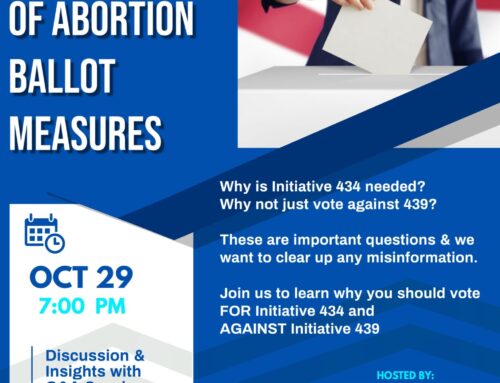National | Steven Ertelt | Apr 21, 2023 | 7:01PM | Washington, DC

The Supreme Court is allowing continued sales of the dangerous abortion pill that kills babies and has killed and injured women.
The vote was 7-2, with Justices Clarence Thomas and Samuel Alito dissenting.
The nation’s highest court ruled today in an unsigned order that the abortion drug mifepristone can continue being sold as is nationwide – turning back an effort by doctors to block sales or at list stop mail-order abortions that put women’s health at risk. It granted the request made by the Biden admin and Danco, the maker of the dangerous pill.
The decision about what to do with the abortion pill while the larger lawsuit against it continues came after a lower court ruling banning mail-order abortions and putting safety measures in place to protect women who are currently being injured at high rates by the abortion pill.
Alliance Defending Freedom Senior Counsel Erik Baptist told LifeNews he was disappointed by the ruling, but indicated he was not surprised the Supreme Court punted for now.
“As is common practice, the Supreme Court has decided to maintain the status quo that existed prior to our lawsuit while our challenge to the FDA’s illegal approval of chemical abortion drugs and its removal of critical safeguards for those drugs moves forward,” he said.
Baptist said his legal team would fight for the doctors who want to protect women and babies.
“Our case seeking to put women’s health above politics continues on an expedited basis in the lower courts. The FDA must answer for the damage it has caused to the health of countless women and girls and the rule of law by failing to study how dangerous the chemical abortion drug regimen is and unlawfully removing every meaningful safeguard, even allowing for mail-order abortions. We look forward to a final outcome in this case that will hold the FDA accountable.”
Abby Johnson, a former Planned Parenthood director, said the ruling is a huge loss for women’s health.
“This decision isn’t a win for women, as the abortion industry will say. In fact, none of the recent abortion pill rulings are wins for women because medication abortion is horrific and no one tells women the true nature of what will happen when they take those pills,” she told LifeNews.
She continued: “I thought I was dying when I had my medication abortion and I was terrified. Women shouldn’t be passing the remains of their children in their toilets at home. The trauma that causes is something no one is talking about nor are mental health professionals prepared to deal with.”
As LifeNews reported, the 5th Circuit Court of Appeals issued a ruling that removes the national block a federal judge placed on the dangerous abortion pill. However, the appeals court also banned mail-order abortions that put women’s lives at risk, condemned the improper FDA approval process for the drug and restored strict limits on the drug meant to protect women’s health that the Biden administration removed.
In its order, a three-judge panel for the Fifth Circuit partly overruled Judge Matthew J. Kacsmaryk of the Northern District of Texas, who declared that the Food and Drug Administration’s approval of mifepristone in 2000 was not valid. That allows the dangerous abortion pill to continue being sold nationwide.
But Joe Biden appealed the 5th Circuit ruling because he wants abortions without limits — so the Department of Justice (DOJ) is asking SCOTUS to intervene in the case.
Alito wrote in the opinion of the Dobbs case that overturned Roe that the court could not regulate abortion, adding that that power rested with the “people and their elected representatives.” Justice Brett Kavanaugh concurred, saying that the court did not “possess the constitutional authority … to decree either pro-life or pro-choice abortion policy for all 330 million people in the United States.”
The Supreme Court could ultimately decide to block the aboriton pill or prohibit mail-order abortions that violate federal law, but it is allowing the full case to play out first. At issue is whether or not the FDA violate sits own rules and federal laws by rushing through the aboriton drug without adequately considering its adverse effect on women.
By illegally approving chemical abortion drugs, the U.S. Food and Drug Administration failed to abide by its legal obligations to protect the health, safety, and welfare of girls and women. The FDA never studied the safety of the drugs under the labeled conditions of use, ignored the potential impacts of the hormone-blocking regimen on the developing bodies of adolescent girls, disregarded the substantial evidence that chemical abortion drugs cause more complications than surgical abortions, and eliminated necessary safeguards for pregnant girls and women who undergo this dangerous drug regimen.
The appellate court said the FDA’s faulty decision to approve the abortion drug could stand because too much time had passed since it was approved — even if that approval process was problematic.
However, the three judge panel also said that it was not to late for the doctors challenging the FDA approval to move forward with their concerns about the moves in 2016 by the Obama administration to remove all important safety regulations on the abortion pill. Additionally, in 2016, the FDA extended the permissible gestational age of the baby for which a girl or woman may take chemical abortion drugs—from seven weeks’ gestation to 10 weeks’ gestation. The 5th Circuit’s order moved that back to seven weeks’ gestation, protecting the mother from adverse complications that increase with gestational age, reinstated necessary doctor visits, and brought back the requirement that abortionists must check women for complications after their chemical abortions.
The removal also included allowing abortion pills to be sold by mail — which further put women’s lives and health at risk.
The Appeals Court order temporarily reinstated all of those pro-life limits on the abortion drug. The Justice Department is likely to appeal the order to the Supreme Court because Joe Biden and Democrats want absolutely no limits on killing babies in abortions.
The 5th Circuit also agreed with Alliance Defending Freedom attorneys that the FDA’s approval of generic mifepristone was unlawful, and that the manufacturer must cease production by Friday.
“The FDA put politics ahead of the health of women and girls when it impermissibly failed to study how dangerous the chemical abortion drug regimen is and when it unlawfully removed every meaningful safeguard that it previously implemented. The FDA should have to answer for the damage it has done to the rule of law and the harm it has caused to countless women and girls,” said ADF Senior Counsel Erin Hawley.
She told LifeNews, “Federal agencies that act lawlessly must be held accountable. The FDA illegally approved dangerous chemical abortion drugs and has evaded its legal responsibility to answer the American people’s questions for two decades. The 5th Circuit’s decision is a significant victory for the doctors we represent, women’s health, and every American who deserves an accountable federal government acting within the bounds of the law.”
The appeals court did not evaluate all of the safety arguments in the case, but it said that the F.D.A. “cannot deny that serious complications from mifepristone” occur. The court also said that the F.D.A. was incorrect in saying that mifepristone was comparable in safety to ibuprofen. “F.D.A.’s own documents show that mifepristone bears no resemblance to ibuprofen.”
In its decision, the 5th Circuit ruled that abortionists are no longer allowed to send chemical abortion drugs through the mail, which the FDA had been allowing since 2021, in direct violation of longstanding federal law. The appeals court agreed that the Comstock Act prohibits mailing abortion drugs and it said the doctors who brought the case had legal standing because they had treated so many women injured by abortion drugs.
The appeals court said that “as a result of F.D.A.’s failure to regulate this potent drug, these doctors have had to devote significant time and resources to caring for women experiencing mifepristone’s harmful effects. This harm is sufficiently concrete.”
Alliance Defending Freedom Senior Counsel Erin Hawley emailed LifeNews about the emergency request.
“By illegally approving dangerous chemical abortion drugs, and imposing its mail-order abortion regime, the FDA put women in harm’s way, and the agency should be held accountable for its reckless actions,” she said. “Pregnancy is not an illness, and chemical abortion drugs don’t provide a therapeutic benefit—they can cause serious and life-threatening complications to the mother, in addition to ending a baby’s life. The district court’s ruling last week was a significant victory for the doctors and medical associations we represent and, more importantly, the health and safety of women and girls. ADF remains committed to their protection.”
Separately, a district court judge, Judge Thomas O. Rice, issued a ruling in the State of Washington v. FDA that preliminarily enjoins the FDA from “altering the status quo and rights as it relates to the availability of Mifepristone under the current operative January 2023 Risk Evaluation and Mitigation Strategy under 21 U.S.C. § 355-1 in Plaintiff States.”
In his decision, Judge Kacsmaryk noted the following:
- Over twenty years ago, the United States Food and Drug Administration (“FDA”) approved chemical abortion (“2000 Approval”). The legality of the 2000 Approval is now before this Court. Why did it take two decades for judicial review in federal court? After all, Plaintiffs’ petitions challenging the 2000 Approval date back to the year 2002, right? Simply put, FDA stonewalled judicial review — until now. Before Plaintiffs filed this case, FDA ignored their petitions for over sixteen years, even though the law requires an agency response within “180 days of receipt of the petition.” (pg. 1)
- Most readers would not define pregnancy to be a serious or life-threatening illness. Even FDA does not earnestly defend that position. True, complications can arise during pregnancy, and said complications can be serious or life-threatening. But that does not make pregnancy itself an illness. (pg. 44)
- One study revealed the overall incidence of adverse events is “fourfold higher” in chemical abortions when compared to surgical abortions. Women who underwent chemical abortions also experienced far higher rates of hemorrhaging, incomplete abortion, and unplanned surgical evacuation. (pg. 45)
- Contrary to popular belief and talking points, the evidence shows chemical abortion is not “as easy as taking Advil.” Compelling evidence suggests the statistics provided by FDA on the adverse effects of chemical abortion understate the negative impact the chemical abortion regimen has on women and girls. When women seek emergency care after receiving the chemical abortion pills, the abortionist that prescribed the drugs is usually not the provider to manage the mother’s complications. Consequently, the treating physician may not know the adverse event is due to mifepristone. Studies support this conclusion by finding over sixty percent of women and girls’ emergency room visits after chemical abortions are miscoded as “miscarriages” rather than adverse effects to mifepristone. Simply put, FDA’s data are incomplete and potentially misleading, as are the statistics touted by mifepristone advocates. (pg. 47)
- The Court does not second-guess FDA’s decision-making lightly. But here, FDA acquiesced on its legitimate safety concerns — in violation of its statutory duty — based on plainly unsound reasoning and studies that did not support its conclusions. There is also evidence indicating FDA faced significant political pressure to forego its proposed safety precautions to better advance the political objective of increased “access” to chemical abortion — which was the “whole idea of mifepristone.” (pg. 57)
The Texas judge ruled that the FDA cannot allow chemical abortion to be prescribed via telemedicine or without an in-person doctor’s visit, while the Washington judge ruled that the FDA must continue providing the abortion pill in accordance with the Biden-era rule changes
While the ruling in the Washington case technically only applies to 12 states, it still stands in direct conflict with the Texas ruling. With two rulings that directly contradict with each other, it is certain that this issue will be resolved by the United States Supreme Court, which just last summer overturned Roe v. Wade.
“This decision shines a light on something that the Biden Administration wants to sweep under the rug – that these drugs do not treat or cure disease but kill unborn children and expose their mothers to dangerous side effects. The FDA should be in the business of ensuring safety, not in taking lives,” said Carol Tobias, president of National Right to Life.
Tobias continued, “The abortion industry has pushed for lowering protections for women undergoing a chemical abortion, while it peddles lies about the ease of the method.”
Mifepristone is used in combination with misoprostol, a prostaglandin, to cause an abortion. Mifepristone blocks progesterone, leading to the death of the unborn baby, while the second drug, misoprostol, causes powerful, painful uterine contractions to expel the dead or dying baby.
The FDA recently weakened the Risk Evaluation and Mitigation Strategy (REMS) requirements for the drug to allow it to be dispensed and even mailed by pharmacies.
“Promoters of these pills like to trumpet high safety rates, but neglect to mention how that with hundreds of thousands of women taking these pills, even a couple of percentage points of women hemorrhaging, dealing with infections, and ectopic pregnancy, represents thousands of women desperately seeking treatment, which may or may not be nearby,” said Dr. Randall K. O’Bannon, Ph.D., director of Education and Research for National Right to Life.
First approved under the Clinton administration, mifepristone is used to abort unborn babies up to about 10 weeks of pregnancy – although some abortionists use it later. It works by blocking the hormone progesterone and basically starving the unborn baby to death. Typically, abortion groups also prescribe a second drug, misoprostol, to induce labor and expel the baby’s body.
Since the overturning of Roe v. Wade, the pro-abortion movement has been pushing abortion drugs even more heavily, and some groups send the drugs to women in pro-life states illegally.
Meanwhile, the Biden administration has been trying to expand the life-destroying drugs even further, first by allowing abortion drugs to be sold through the mail without any direct medical supervision, and, more recently, by allowing pharmacies like Walgreens, CVS and RiteAid to sell them.
In California, public colleges and universities also are required to provide abortion drugs for free on campus, and other Democrat-run states are considering similar mandates.
Along with millions of unborn babies’ deaths, the FDA has linked mifepristone to at least 28 women’s deaths and 4,000 serious complications. However, under President Barack Obama, the FDA stopped requiring that non-fatal complications from mifepristone be reported. So the numbers almost certainly are much higher.
Studies indicate the risks of the abortion drug are more common than what abortion activists often claim, with as many as one in 17 women requiring hospital treatment. A recent study by the Charlotte Lozier Institute found that the rate of abortion-related emergency room visits by women taking the abortion drug increased more than 500 percent between 2002 and 2015.
Another new study from the University of Toronto, “Short-Term Adverse Outcomes After Mifepristone–Misoprostol Versus Procedural Induced Abortion,” published in the Annals of Internal Medicine, found that one in ten women who took the abortion pill had to go to the emergency room, according to Pregnancy Help News.






Leave A Comment